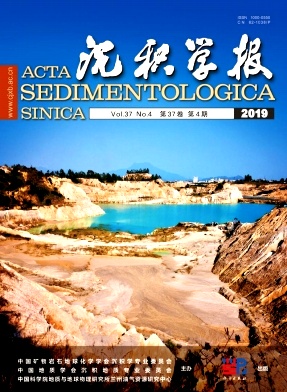Microfacies Analysis of Lower Aptian (Cretaceous) Shallow-water Carbonate in the Mt.Faito Section, Italy
doi: 10.14027/j.issn.1000-0550.2018.166
- Received Date: 2018-05-23
- Rev Recd Date: 2018-08-30
- Publish Date: 2019-08-10
-
Key words:
- Early Aptian /
- Apennine carbonate platform /
- carbonate microfacies /
- climate changes
Abstract: Three distinct lithostratigraphic units A,B,and C have been recognized according to field work and thin section observations. The crudely stratified Unit A deposited in subtidal environments is characterized by monotonous wackstone intercalated with bioclastic wackstone-packstone. The well-bedded Unit B consists largely of bivalve float-stones in a matrix of bioclastic packstone deposited in subtidal conditions. Unit C,disconformably overlying Unit B, is composed of complex lithofacies associations that deposit in variable environments from subtidal to supratidal set-tings,sometimes in lagoon environments. According to the biota range chart and stable carbon isotope data from the Mt. Faito section,which can be used to analyze the biosedimentary diversity,different climatic and sea water condi-tions can be inferred as well. Unit A is characterized by a "Chlorozoan" association,which indicates warm and oligo-trophic conditions;Unit B is dominated by "Chlorozoan" and "Foramol" associations that indicate relatively warm and mesotrophic conditions;and Unit C is a combination of "Microbial" and "Foramol" associations,hence mesotro-phic and temperate thermal conditions. Therefore,local early Aptian biosedimentary shifts and paleoenvironmental turnovers exerted by the increasing temperature,CO2,and nutrient contents have been interpreted on a global scale by analyzing the biosedimentary evolvement and correlating the C-isotope curve with those of other early Cretaceous carbonate platforms and basins worldwide.
| Citation: | SUN QingQing, FAN TaiLiang, Roberto Graziano, WU Jun. Microfacies Analysis of Lower Aptian (Cretaceous) Shallow-water Carbonate in the Mt.Faito Section, Italy[J]. Acta Sedimentologica Sinica, 2019, 37(4): 723-734. doi: 10.14027/j.issn.1000-0550.2018.166 |






 DownLoad:
DownLoad: